We, at Brahmaputra Cultural Foundation (BCF) are engaged in the process of creating a digital archive where we host the photographs, descriptions, audio and video recordings of indigenous musical instruments of Assam. These instruments are a major part of our folk culture. The Assamese culture is a synthesis and symbiosis of all the ethnic communities who live by the banks of the mighty Brahmaputra. Many musical instruments of the communities are similar in the making but their names differ across communities. The instruments fall into these 4 orders:
Membranophone: Wooden or metallic shell covered with animal hide or membrane and played by clapping with hand or striking with bamboo stick
Audiphone: Instruments made of metal, wood or bamboo and played by striking with a stick of similar material or with any hand
Aerophone: Instruments played by blowing with mouth or synchronising the flow of air through it
Cordophone: Instruments played by striking the string or rubbing with a bow
The Brahmaputra Cultural Heritage Centre, Guwahati has given the BCF the Attic Room to curate and we are honoured and grateful to have a physical space/a museum for the traditional instruments of the various ethnic communities of Assam.
This digital archive is in process. Below is a sample of one such instrument where we have – a short description about it, relevant pictures, an audio file showcasing it being played and (where available), a short video demonstration of its construction and playing style.
Many traditional musicians from rural Assam were commissioned to make instruments for the museum project by BCF, and it is evolving further due to a wonderful team of well-wishers, colleagues, informers and experts. We apologize for any faults, knowingly or unknowingly, done in this curation process. We hope the scholars, researchers and the younger generation will welcome our efforts towards curating such a physical and digital space. The diversified Assamese culture is enriched with innumerable folk dance, music and musical instruments. It is the right time to take appropriate steps to not to allow this rare wealth at any cost to dwindle away in the rapid waves of globalization, destruction and dilutions.
Here are the links to experience the different instruments according to the above mentioned categories.
Here are the links to experience the different instruments according to different tribes.
- Assamese
- Bodo
- Gowalporiya
- Hajong
- Karbi
- Mising
- Moran
- Rabha
- Tea Tribe
- Tiwa
Experience the detailed movies of the journey of the instruments
1. Ektara or Laotokari
It is made from a hollow bottle gourd (known in Assamese as ‘lao’) attached to a bifurcated bamboo cylinder closed at one end. The bottom of the gourd shell is covered with a thin hide fitted to the center with a Muga (traditional silk from Assam) thread extended up to a peg near the node of the bamboo handle. The thread is operated with forefinger of the right hand while the left hand pressing off and on the bamboo frame toward the node. It is used in almost every part of Assam. This instrument is accompanied with Dihanaam, Dehbisaror Geet and other devotional songs.
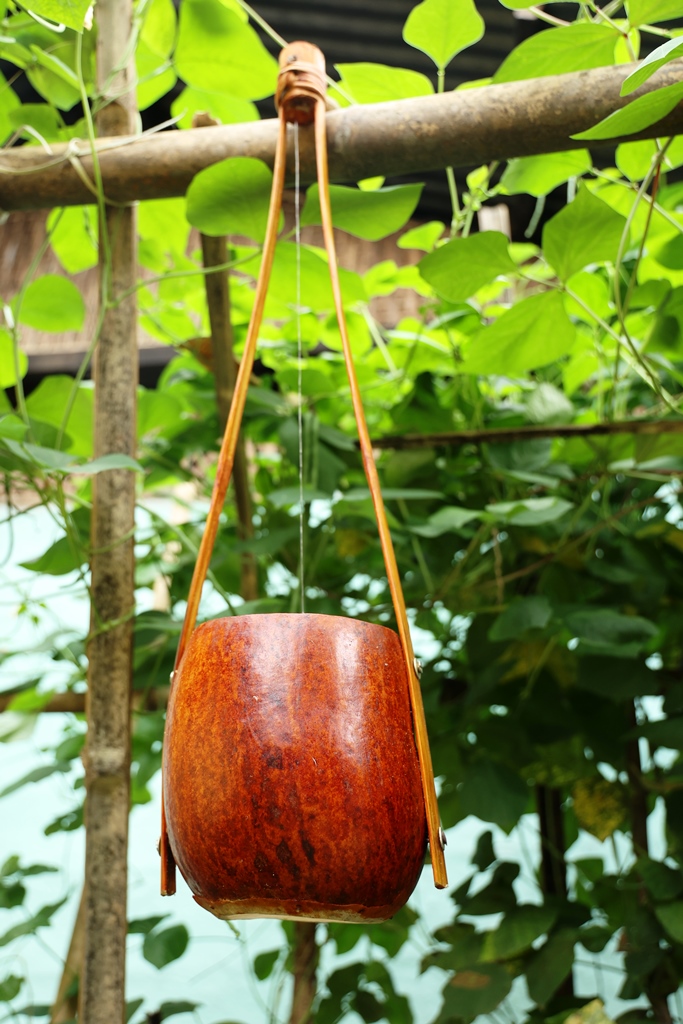


Artist: Mukunda Madhab Bora
Feel the Music
Watch the process of making
2. Xutuli
From the shape and sound of Xutuli, it can be deduced that this instrument imitates birds. It is made of sticky soil. In Assamese culture during the festival of Bohag Bihu, Xutuli has an importance of its own. Initially, the cowboys (Gorokhiya lora) used Xutuli as a toy, because of ease of construction. Xutuli is played by both boys and girls in Bihu, but most importantly Xutuli is an indispensable part of Jeng Bihu and Bihuwati dances, and predominantly played by girls.
The Karbi community calls it Torlit and it is made in the imitation of the sound of the cicada to invoke rain. The Karbi young boys play the Torlit to amuse in their slash-and-burn cultivation. The Rabha community calls it Gugubela or Gugumela and is made of sticky soil in hemispherical shape. It is played by cowherds in leisure time of cultivation.

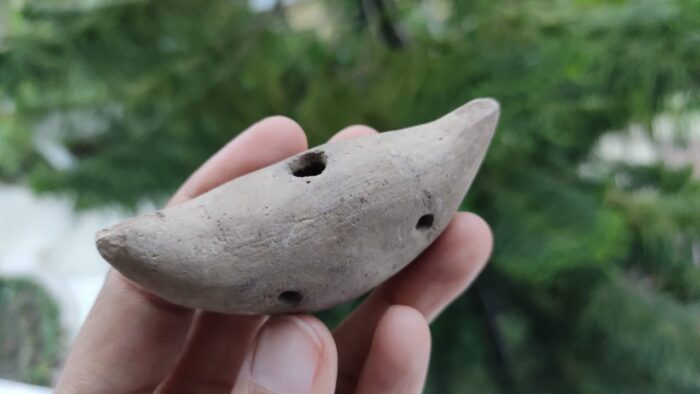

Artist: Mukunda Madhab Bora
Feel the Music
“Xutuli” for the Ecoversity Alliance
A dramatisation about the musical instrument Xutuli from the state of Assam in India.
The video starts with the probable story about the origins and then gets into the construction of different kinds of Xutuli. We also illustrate the science behind its musical tunes. This format has been chosen so that the video can evoke widespread interest in the community it is intended to be distributed. From the shape and sound of Xutuli, it can be deduced that this instrument imitates birds. It is made of sticky soil. In Assamese culture during the festival of Bohag Bihu, Xutuli has an importance of its own.
Initially, the cowherding boys (Gorokhiya lora) used Xutuli as a toy, because of ease of construction. Xutuli is played by both boys and girls in Bihu, but most importantly Xutuli is an indispensable part of Jeng Bihu and Bihuwati dances, and predominantly played by girls. The Karbi community calls it Torlit and it is made in the imitation of the sound of the cicada to invoke rain. The Karbi young boys play the Torlit to amuse in their slash-and-burn cultivation. The Rabha community calls it Gugubela or Gugumela and is made of sticky soil in hemispherical shape. It is played by cowherds in leisure time of cultivation.
“Xutuli” was possible thanks to the support of the Ecoversities Alliance 2020 Publication, Film and Multimedia Initiative.
Watch the process of making
3. Kortal
Kortal is made of a piece of bamboo about half cubit long bifurcated and levelled. It is played by placing it in the palm in accompanying devotional music. Amongst the different classification of musical instruments, the Kortal can be called an Audiophone.
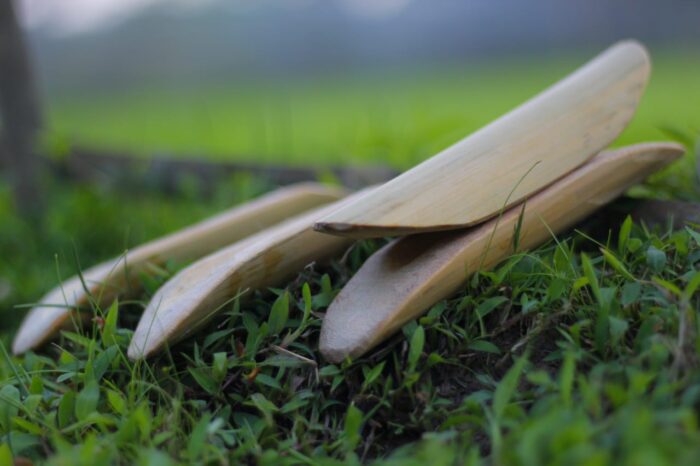
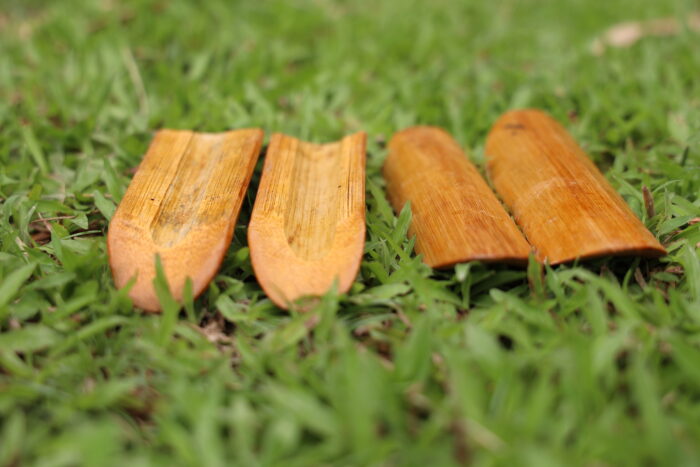

Artist: Mukunda Madhab Bora
Feel the Music
“Kortal” for the Ecoversity Alliance
The video is a dramatisation about the musical instrument Kortal from the state of Assam in India. It starts with a fictional story about the origins and then gets into the construction of Kortal. The video contains glimpses of folk culture and Neo-Vaishnavite culture in the form of devotional songs, references to history. This format has been chosen so that the video can evoke widespread interest in the community where it is intended to be distributed. Kortal is made of a piece of bamboo about half cubit long bifurcated and levelled. It is played by placing it in the palm in accompanying devotional music. Amongst the different classification of musical instruments, the Kortal can be called an Audiophone
“Kortal” was possible thanks to the support of the Ecoversities Alliance 2020 Publication, Film and Multimedia Initiative.
Watch the process of making
4. Dhutong
Dhutong of the Morans is made from one year old bamboo variety called “Jati Bah” in Assam. The nodes and outer rinds are cleared off and made thinner. Then it is baked for a while. One of the open ends is placed on the abdomen and struck twice with a bamboo stick about 1 foot long. By repetition of the process a sweet musical sound “Tung-tung-tang-tang” is produced. In earlier days it used to one of the main instruments of folk festivals. The Deoris call this instrument Denthou and is played by cowherds.
Dumpak by the Misings is made from the bamboo cylinder with node at one end and played with a bamboo stick or fingers. The end with the node is scrapped slightly on one side and is struck with the stick/fingers to emit various sounds. It is accompanied with Ai-nitam, Lotta-choman and Lereli choman festivals. The Deoris call it Dhultong.



Artist: Mukunda Madhab Bora
Feel the Music
Watch the process of making
5. Kodital or Ghilatal
It is an Audiophone instrument, it is made of a small bamboo spike about 3 feet long to be grasped with the hand. Small calibres are cut at half inch intervals. It is dragged across a cowrie shell holding in the left-hand palm to emit musical sound in accompaniment with devotional songs. In the Hajong tribe the cowrie is substituted with entada (Ghila).



Artist: Mukunda Madhab Bora
Feel the Music
Watch the process of making
6. Baghdhenu


Artist: Mukunda Madhab Bora
Feel the Music
Watch the process of making
7. Anandalohari or Gopiyantra
It is a kind of Tokari. It is made out of a wooden bottle gourd shell. The lower portion of the shell is covered with a goat’s hide. A Muga string is connected at the middle of the hide. The other end of the string is attached with a cloth ball or bamboo knob. The end of the string is held with the left hand and operated with the stroke of the fore finger of the right hand. It is accompanied with devotional songs.



Artist: Mukunda Madhab Bora
Feel the Music
Watch the process of making
8. Tengteng


Artist: Mukunda Madhab Bora
Feel the Music
Watch the process of making
9. Samuk taal
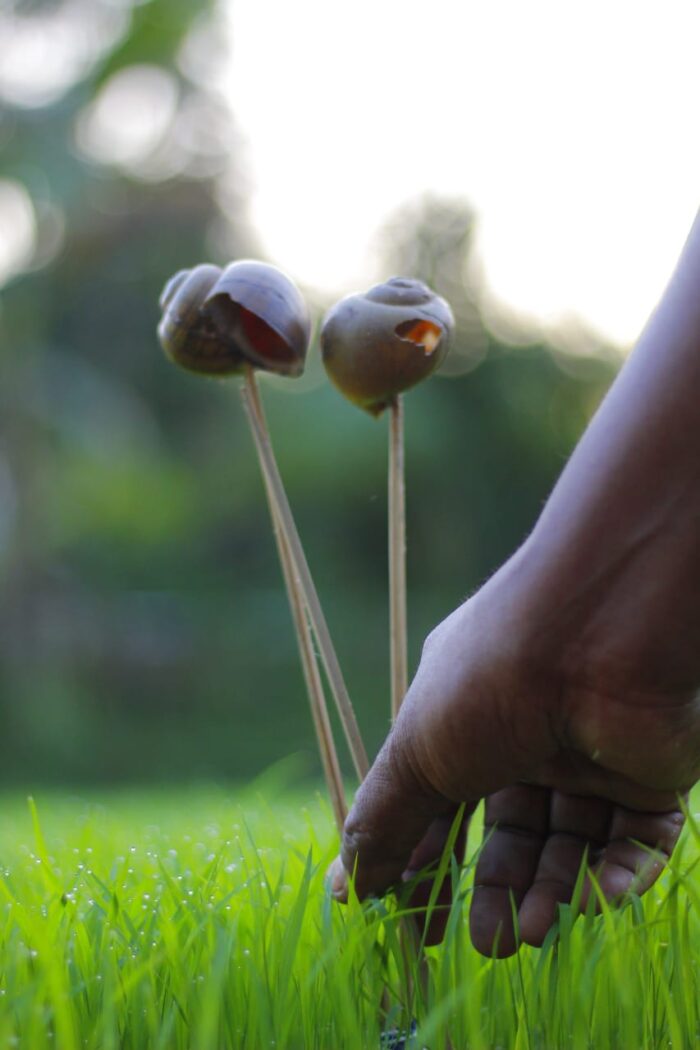

Artist: Mukunda Madhab Bora
Feel the Music
Watch the process of making
10. Kichokbenu


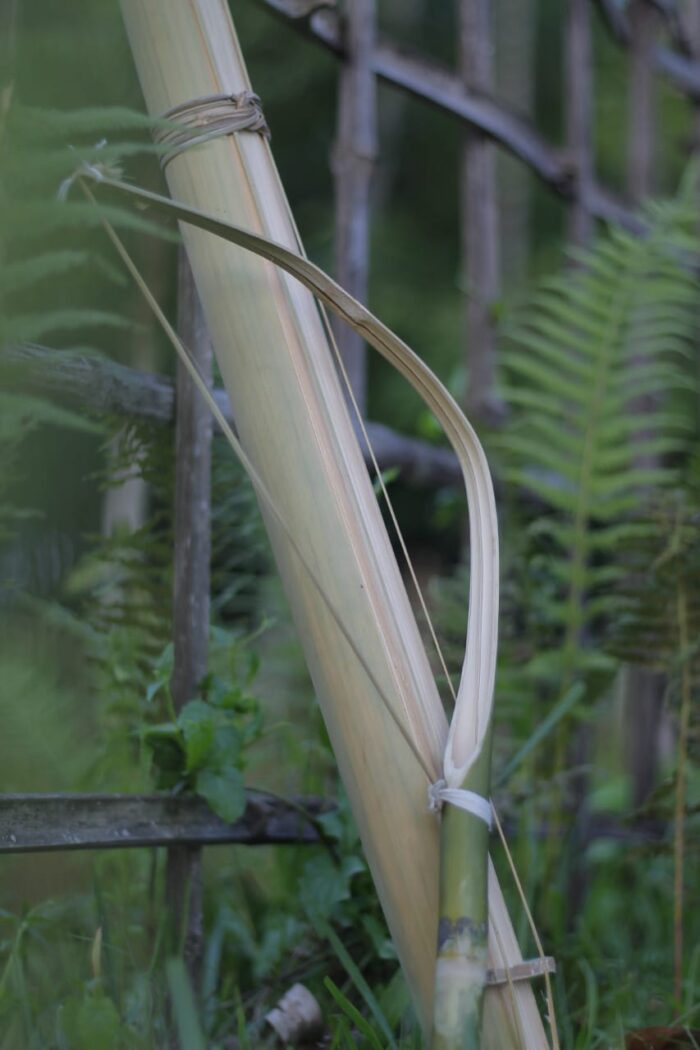
Artist: Mukunda Madhab Bora
Feel the Music
Watch the process of making
11. Rogoi Dang

Artist: Mukunda Madhab Bora
Feel the Music
Watch the process of making
12. Daskathiya

Artist: Mukunda Madhab Bora
Feel the Music
Watch the process of making
Moran Community
মৰাণ জনগোষ্ঠী অসমৰ অন্যতম খিলঞ্জীয়া ভূমিপুত্ৰ। মূলতঃ মৰাণসকল কিৰাত কছাৰী মূলৰ মানুহ। বসতিৰ ফালৰ পৰা উজনি অসমৰ তিনিচুকীয়া জিলাৰ পৰা পূৱ প্ৰান্তত থকা অৰুণাচল প্ৰদেশৰ সীমালৈকে মৰাণ জনগোষ্ঠীৰ অধিক জনবসতি। মৰাণ জনগোষ্ঠিৰ লোকসকলে প্ৰত্যেকটো লোক-উৎসৱৰ সৈতে ধৰ্মীয় আৱেগ অনুভূতিক সংমিশ্ৰিত কৰি পালন কৰা দেখা যায়। পূৰ্বে তেওঁলোক আছিল শাক্তপন্হি, শদিয়াৰ কেচাঁইখাতী বা তাম্ৰেশ্বৰী দেৱীৰ উপাসক, সেই সময়ত তেওঁলোকে ব'হাগৰ প্ৰথমটো মঙ্গলবাৰে দেৱী পূজা কৰি শালৰ পৰা বিহু নমাই বুধবাৰে বৰবলি দি সেই দিনা গোঁসানীৰ সন্তুষ্টিৰ বাবে নৃত্য, গীত, আনন্দৰ উৎসৱৰ আয়োজন কৰিছিল,পূৰ্বতে এই বিহু সাতদিন-সাত ৰাতি পালন কৰিছিল (কালক্ৰমত ৰূপান্তৰ হৈ এই বিহু ৰাতি বিহু) । পৰৱৰ্তী কালত মৰাণসকলে শ্ৰী শ্ৰী অনিৰুদ্ধদেৱ প্ৰৱৰ্তীত কালসংহতি মায়ামৰা বৈষ্ণৱ ধৰ্ম গ্ৰহণ কৰে আৰু পিছলৈ দেৱীশাল পৰিৱৰ্তে সত্ৰ বা গাঁৱৰ নামঘৰৰ পৰা বিহু নমোৱা পৰম্পৰা প্ৰচলিত হয়। অন্যান্য জনগোষ্ঠীৰ দৰেই মৰাণসকলৰ সমাজ আৰু সাংস্কৃতিক জীৱন অতি চহকী। তেওঁলোকৰ মাজত সুকীয়া বৈশিষ্ট্যৰে সমৃদ্ধ এক ঐতিহ্যময় সাংস্কৃতিক ধাৰা প্ৰৱাহমান। মৰাণ সমাজত প্ৰচলিত অনেক ৰীতি-নীতি, লোক-প্ৰবাদ, কিংবদন্তি, ভাষা, মন্ত্ৰ, লোক-সাহিত্যৰ, বৈচিত্ৰ্যতাই অসমীয়া সংস্কৃতি, ভাষা-সাহিত্যৰ ক্ষেত্ৰখনলৈ অমূল্য অৱদান আগবঢ়াইছে।The Moran people are one of the indigenous people of Assam. The Morans are mainly of Kirat Kachari origin. They are the largest ethnic group in upper Assam from Tinsukia district to the eastern border of Arunachal Pradesh. The Moran people celebrate every folk festival with religious sentiments. Earlier they were Shaktapanhis, worshipers of Kechaikhati or Tamreshwari Devi of Shadia. At that time they worshiped the goddess on the first Tuesday of Assamese month Bohag (in April), performed the first Bihu in Devishal and sacrificed on Wednesday. Later, the Morans converted to the Kalasanghati Mayamara Vaishnavism introduced by Sri Sri Aniruddhadeva and the tradition of performing Bihu from village Naamghar instead of the Devishal was introduced. Like other ethnic groups, the Moran people have a rich social and cultural life. They have a traditional cultural stream rich in distinctive characteristics. There are many customs, folklore, legends, languages, mantras, folk literature, and diversity prevalent in the society that has made invaluable contributions to the field of Assamese culture, language and literature. We have documented 11 existing musical instruments of the Moran community: Veen, Mridanga, Moran Dhul, Pepa, Jurtong, Dhutong, Bojal Bahor Xutuli, Sak-soni Dang-Mari, Jengu Pator Pepa, Baghdhenu, Toka.
Instruments of the Morans
13. Veen
ডাঙৰ নাৰিকলৰ খোলা আধাকৈ কাটি বা কাঠৰ খোলা নিৰ্মাণ কৰি কুচিয়া বা গুই ছাল লগাই বীণ তৈয়াৰ কৰা হয়। কাঠৰ খোলাটোৰ সৈতে এহাত আৰু এবেগেতমান জোখৰ বীণৰ বতিয়া (গুণ) লগাবৰ বাবে মাৰি এডালো একেলগে সজা হয়। এইডালৰ শেষৰ ফালে খোলনিত বীণৰ গুণ শলা লগোৱা থাকে। এই শলাত বীণৰ গুণডাল খোলাৰ ছালৰ ওপৰৰ ফৰিঙটোৰ ওপৰে টানকৈ লগোৱা হয়। বীণৰ গুণত ঘৰ্ষণ কৰি বজাবৰ বাবে এডাল বাহঁৰ ধেনুভিৰীয়া মাৰিত মুগা সূতাৰ বা ঘোঁৰাফানৰ চুলি লগাই বীণৰ গুণত ঘৰ্ষণ কৰি সুৰ উৎপন্ন কৰা হয়, এনেদৰেই বীণ বজোৱা হয়। এইডালকে বিণজু বা ঝু বোলা হয়। তদুপৰি বাঁহৰ সৰুকৈ চাঁচি ১৬ ইঞ্চিমান দীঘল এডাল ৰেপনি মাৰিৰেও বীণ বজোৱা হয়। অতীজতে বীণৰ তালে তালে মৰাণসকলে লোক-নৃত্য কৰিছিল মৰাণৰ ডেকা চাঙত। বিহুগীত, বিয়া, খেৰি, বা গীত বীণত বজাব পাৰি। বিভিন্ন আমোদ-প্ৰমোদতো বীণ বজোৱা হয়।Veen is made by cutting in half large coconut shells or wooden shells and adding monitor lizard’s skin. The wooden shell kind is also accompanied by a stick to attach (a hand size of) the Veen string. At the end of this branch, the shell is attached to the Veen bow. In this bow, the Veen string is attached tightly to the Foring on the shell. It is played by attaching velvet yarn or horsehair to a bow-shaped stick made of bamboo and rubbing it to produce a melody. This is called Binju or Zhu. The Veen is also played with a small bamboo stick about 16 inches long. In the past, the Moran people performed folk dances to the beat of the Veen in the Maran Deka Chang (youth house). Bihu songs, wedding songs, kheri songs can be played on the Veen. The Veen is also played for various entertainment purposes.


Artist: Debeshwar Moran
Feel the Music:
Playing with folk song:
14. Mridanga
অৱনদ্ধ শ্ৰেণীৰ বাদ্য। কঠাল, চাম বা গমাৰী কাঠৰ পৰা মৃদঙ্গৰ খোলা মৰাণেসকলে প্ৰস্তুত কৰে। মৃদঙ্গৰ খোলাটোৰ দীঘ প্ৰায় ডেৰ হাত তিনিআলি আৰু মাজৰ অংশ পেটুৱা। দুই মূৰে চাপ খোৱা বাওঁহাতে বজোৱা অংশতকৈ সোঁহাতে বজোৱা অংশটি সৰু। এই বাদ্যটো পশু ছাল ব্যৱহৃত হয়। ই মাঙ্গলিক অনুষ্ঠানত বজোৱা বৈষ্ণৱ ধৰ্মৰ লগত জড়িত বাদ্য। মাঙ্গলিক অনুষ্ঠানৰ ভিতৰত কীৰ্তন, সবাহ, গৰালি, শৰণীয়া, পুৰোহিত, ডাঙৰীয়া, গোসাঁই আদিৰ শৱ যাত্ৰা, দহা-কাজ (শ্ৰাদ্ধ), গোসাঁই বা সম্ভ্ৰান্ত লোকক আদৰা, বৰবিয়া ইত্যাদি অনুষ্ঠানত মৃদঙ্গ বায়নে বজায়। বায়নৰ মৃদঙ্গৰ সৈতে গায়নেও মহাপুৰুষীয়াকেইজনাৰ সৃষ্টি গীত ৰাগৰ সৈতে ভোৰ তাল সংগত কৰে।Mridanga is a Membranophone instrument. The Moran people make the shell of the Mridanga from Jackfruit, Cham or Gamari wood. The shell of the Mridanga is about three and a half cubits long and the middle part is belly. The right-handed part is smaller than the left-handed part, which is pressed at both ends. This instrument is made of animal skin. It is an instrument associated with Vaishnavism played on auspicious occasions. They are used in auspicious ceremonies such as kirtan, community meetings, garali, sharania functions, funeral processions of Priests, Dangriyas, Gosai, Daha-kaj (shraddha), welcoming of Gosai or nobles, Borbia or weddings etc. They are used as accompanists in the morning songs and ragas composed by Mahapurukh Srimanta Sankerdeva and Madhabdeva.



Artists: Hemanta Moran, Pushpo Moran, Mileshwar Moran, Diteshwar Moran.
Feel the Music
Playing with folk song:
15. Moran Dhul
ঢোল অৱনদ্ধ বাদ্য। চাম, কঠাল, গমাৰি গা-গছৰ প্ৰায় ২ ফুট দীঘল কাঠ কাটি খোলনী বটালিৰে খুলি ঢোলৰ খোলা তৈয়াৰ কৰা হয়। খোলাটোৰ এফালৰ মুখখন ১৫/১৬ ইঞ্চি আৰু আনখন মুখ ১৩/১৪ ইঞ্চিমান ব্যাসৰ থাকে। উল্লেখযোগ্য যে অসমৰ আন জনগোষ্ঠীতকৈ মৰাণ ঢোল আকাৰত যথেষ্ট ডাঙৰ। ঢোলৰ এটা মূৰ শৰপহু আৰু আনটো মুৰত হৰিণা বা ছাগলীৰ ছাল লগোৱা হয়। মৰা ৰঙা বলধ গৰুৰ ছালো লগোৱা হয়। ডাঙৰ ব্যাসৰ মুখখন, য'ত হৰিণা বা ছাগলীৰ ছাল বা পহু বা গৰুৰ পিঠিফালৰ ছাল লগোৱা সৰু ব্যাসৰ মুখখনক দবনি বা কোবানি বোলে। দৱনিৰ ফালে খোলাটো এটা সাঁজ কটা থাকে, তাত ঢোলৰ ভাল ধ্বনিৰ বাবে বাঁহৰ চাৰি চুকীয়াকৈ কাটি সৰু টুকুৰা লগোৱা থাকে। এই বাঁহৰ টুকুৰাবিলাকক ফৰিঙ বোলে। ফৰিঙৰ পৰা কোবনিৰ ফালে আধা ইঞ্চিমান পশু ছালৰ বৰতি কাটি নগৰা তৈয়াৰ কৰি কোবানি ছালখন টানি টানি লগোৱা হয়। তিলিফালে তালি ছালখন টানি ধৰিবৰ বাবে এখন কাটনী ছাল লগোৱা হয়। ইয়াক মেখেলাও বোলা হৈছিল। কাটনী বা মেখেলাৰ এটা বৰতিৰে গুঠি আঙঠি বা নাগাৰা তৈয়াৰ কৰি তালি ছালখন চিলাই কৰাক কাটনী বান্ধনি বোলে। উক্ত নাগাৰা বা আঙঠিক মলুৱাও বোলে। আধা ইঞ্চিতকৈ সৰু পশু ছালৰ বৰতি কাটি দবনি আৰু তালিৰ মলুৱা দুটাক এক আঙুল দূৰে দূৰে চিলাই ঢোল চাৱনী কৰা হয়। অতীতত বেটৰো বৰতি লগোৱা হৈছিল। ঢোলটোৰ দুয়োমূখে থকা মলুৱা দুটাত দুটা দোল নাগাৰা বৰতিৰে গুঠি লগোৱা থাকে। এই নাগাৰা দুটাতে বৰতিৰে গুঠি বা গামোচা বান্ধি ঢোল বজাবৰ বাবে লোৱা হয়। ঢোল বজাবৰ বাবে পুৰঠ বাঁহ এডালৰ ১০/১২ ইঞ্চিৰ মিহি মাৰি কাটি লোৱা হয়। ইয়াক ঢোল মাৰি বোলা হয়। ঢোল মাৰিৰে দবনিত আৰু হাতেৰে তালিত চাপৰ মাৰি ঢোলৰ খোট মৰা হয়।
উল্লেখযোগ্য যে বহু শতিকাৰ আগৰে পৰাই ই খণ্ডত মৰাণে আমোদ-প্ৰমোদ, আনন্দোৎসৱ আৰু কৃষ্টি উৎসৱত ঢোল ব্যৱহাৰ কৰি আহিছে। কথিত আছে যে মৰাণৰ অন্তিম ৰজা বদৌচাই ৰাজপাটত উঠোতে ৰাজ অভিষেকৰ সময়ত এশ মৰাণ ঢুলীয়া, এশগৰাকী মুগা ৰিহা আৰু কলীয়া ৰিহা পৰিধান কৰা গাভৰুৱে নৃত্য-গীত গাই আদৰিছিল। ঢোলটো ধুম-ধুভকৈ বাজে কাৰণে মৰাণে ইয়াক ঢোল বুলি কয়। The Dhul (Drum) is a membranophone or drum instrument. The drum shell is made by cutting wood about 2 feet long from the trunk of the tree. One side of the shell is 15/16 inches and the other is 13/14 inches in diameter. It is noteworthy that the Moran Drum is much larger in size than other ethnic groups of Assam. The drum is covered in one end with skin of Sambar Deer and the other end with Deer or Goat skin. Dead Bull skin is also used. The larger diameter side which is made with the skin of a Deer or Goat is called ‘davani’ or ‘kuboni’. The davani side has grooves, with a small piece of bamboo cut into squares and attached to it for a good sound of the drum. These pieces of bamboo are called ‘foring’. A half-inch piece of animal skin is cut from the ‘foring’ towards the ‘kuboni’ and the skin is pulled to make that side. A ‘katoni’ skin is applied to the palm skin (kuboni) to hold it. It is also called ‘mekhela‘. The sewing of the palm skin by tying a stick of katoni or mekhela to make a ring or nagara is called Katoni bandhani. The nagara or ring is also called malua. They are cut from animal skins smaller than half an inch and sewn together one finger apart. In the past, bats were also used. The Dhul is tied together with nagara boroti on the two sides of the drum. These two nagara are used to play the drums by tying them with a knot or gamocha. To play the drums, a mature bamboo is cut into 10/12 inch fine pieces. This is called drum stick. The davani side is beaten with the drum sticks and the kuboni side is beaten with the hands.
It is to be noted that the Moran people have been using Dhul in entertainment, festivals and cultural festivals since centuries ago. It is said that when the last king of Moran, Badaucha, ascended the throne, a hundred Moran drummers, a hundred girls wearing velvet riha and black riha welcomed him with dances and songs. The drum is called Dhul by the Morans because it plays loudly.



Artists: Jintu Goswami, Bhaskar Moran.
Feel the Music
Playing with folk song
16. Saksoni & Dangmari
মৰাণ বিহুখোলাত ডেকা ল'ৰাই বজোৱা দীঘল গোটা বাঁহ আৰু মাৰিৰ বাদ্য। চাকচনি এহাতমান দীঘল আৰু দুই আঙুলিমান বহল এডাল পূৰঠ বাঁহৰ পৰা নিৰ্মাণ কৰা হয় আৰু দাংমাৰি তিনিহাত দীঘল জোখৰ গোটা বাঁহৰ হয়। বসন্ত ঋতুৰ সময়ত চাপচনি নামৰ এক পতঙ্গ ওলায়। এনে দুডাল চাকচনি মাৰিৰে আগত বগা কাপোৰ আঁৰি সন্ধিয়া পৰত কপি (চাকি) জ্বলাই টাক-টাক, টাক-টাক কৈ মাৰিলে উক্ত পতংগবিধ উৰি আহি বগা কাপোৰত পৰেহি । সেয়েহে এই মাৰি দুডালক চাপচনি বা চাকচনি মাৰি বোলে। চাকচনি বা চাপচনিয়ে দাংমাৰিত পিতি শব্দৰ লহৰৰ সৃষ্টি কৰে ।It is a long whole bamboo and stick played by young men in Moran Bihukhola. The Saksoni is made of a mature bamboo about one hand long and two fingers wide and the Dangmari is made of whole bamboo three hands long. During the spring season, an insect called Sap-Sani appears. Playing Saksoni, the insects falls on a white cloth covered around a ‘saki’ (candle) in the evening. Therefore, these two sticks are called chap-chani or chak-chani or sak-soni sticks. Saksoni creates melody, sound waves by beating on Dangmari.



Artists: Montu Chetia, Somonjit Moran.
Feel the music
Playing with folk song
17. Pepa
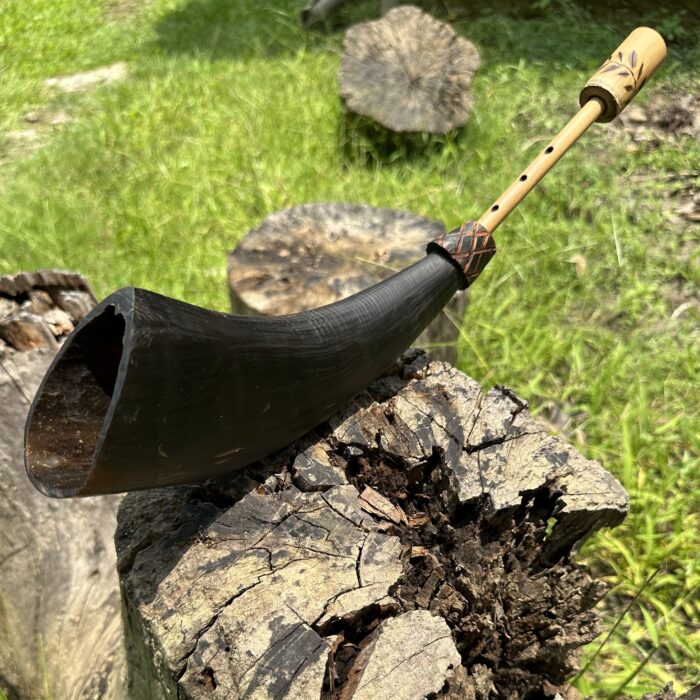

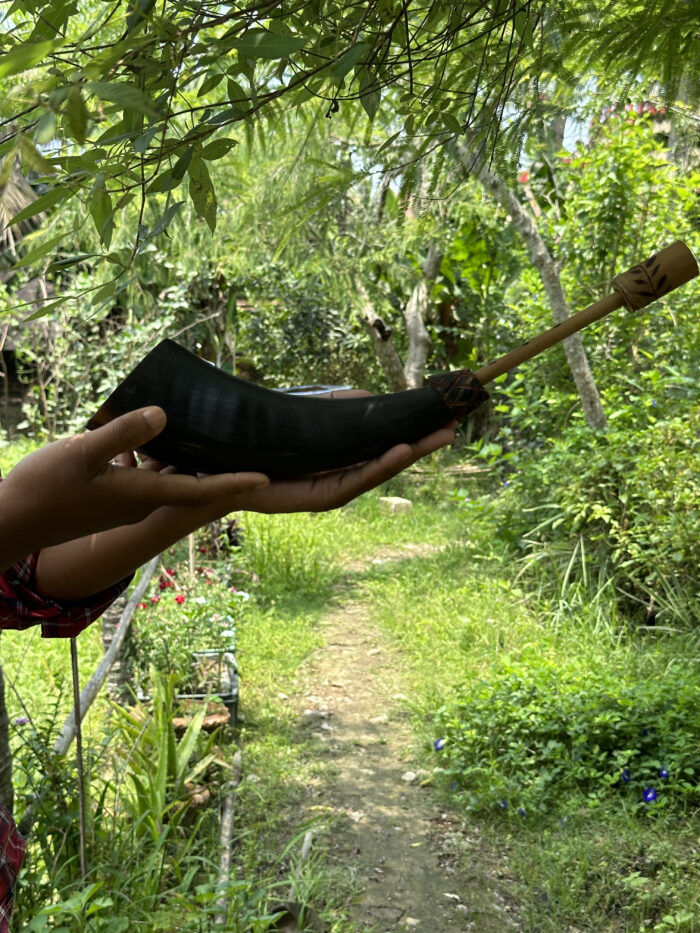
Artists: Ratneshwar Moran, Roman Moran.
Feel the music
18. Jurtang
বাহঁৰ পাব এটাৰ মাজডোখৰ চুঁচি পাতল কৰি পাবটোৰ দুয়ো মূৰে দুটা দুটাকৈ ফুটা কৰি মুগা সূতা বা পাত সূতাৰ ৰচী বা গুণ লগোৱা থাকে। এই গুণ দুডাল পাবটোৰ চুঁচি লোৱা অংশৰ ওপৰে দুয়োটা মূৰে বাঁহৰ ফৰিং লগোৱা থাকে। তদুপৰি বাঁহৰ পাবটোৰ পৰাই দুডাল পাতল জু তৈয়াৰ কৰিও জোৰটং প্ৰস্তুত কৰা হয়। এই জুত ফৰিং লগাই লাঠিৰে আঘাত কৰি বিভিন্ন ঢোলৰ খোট, বুলনি আদি জুৰটংত গুণৰ ঝংকাৰ মূৰ্ছনাৰে যিকোনো লোককে সহজতে আকৰ্ষণ কৰিব পাৰে। এইবিধ বাদ্য অতি প্ৰাচীন। The middle of a bamboo is thinned and two holes are made at both ends of the bamboo and Muga yarn or Paat yarn is attached. These two strings are secured with Foring of thinned bamboo at both ends. Jurtong is also made by making two thin ‘jhu’ from the bamboo. This sound can easily adapt in various Drum beats, Buloni etc. This instrument is very ancient.



Artist: Ratneshwar Moran.
Feel the music
19. Dhutong
কুমলীয়া বাঁহৰ পাব এটা আধা পুৰি এফালে চুঁচি পাতল কৰি ভম' এটাই জুইত ৰঙা কৰি বা জ্বলা আঙঠা লগা কাঠ খৰি এডোখৰে পাতল কৰা অংশত সেক দি লিকতা কৰি ল'ব লাগে, যাতে সহজে নাফাটে। এখন হাতে ঢোটঙৰ তলফালে ধৰি ঢোটঙটো তল পেটত বিশেষ কৌশলেৰে মাজে মাজে সংস্থাপন কৰি ঢোলৰ দৰে এডাল মাৰিৰে কোবাই সুমধুৰ ধ্বনিৰ চেও তুলি ঢোটং বজোৱা হয়। ঢোলৰ দৰে সুমধুৰ ধ্বনি তুলিব পাৰি বাবে ইয়াক ঢোটং বোলা হয়। মৰাণৰ ঝুম খেতিত, ভূঁই তলিত আৰু গৰখীয়া যজ্ঞৰ পিছত গৰখীয়াসকলে বজোৱা এই বাদ্যটি বিহুতো আন বাদ্যৰ লগত সংগত কৰা হয়। ঢোটং সৃষ্টিৰ এটি লোকসাধু শুনিবলৈ পোৱা যায়। ঝুম খেতিত আহুধান সিঁচোতে হেদাহি লগাই বহুলোক জুম বান্ধি একেলগে কৰিছিল ঝুম খেতিয়কসকলে খিলাং পাত (বনৰীয়া চাহ গছৰ কুমলীয়া পাত জুইত সেক দি শুকুৱাই চাহ তৈয়াৰ কৰা পাত) ৰে গঙৰ ( চাহ তৈয়াৰ কৰিবৰ বাবে অলপ কুমলীয়া বাঁহৰ চুঙা) তলত জুই জ্বলাই চাহপানী কৰি খাইছিল। এই গঙবোৰ ঝুম তলিতে পৰি থাকে। পৰি থকা এবাৰ এনে গঙবোৰ চাঁচি গাঁঠিটো কাটি দুজন গতিয়ালে (কিছুমানৰ মতে গতিয়ালৰ ল'ৰাই) চালিধৰা কঁকালত পৰিধান কৰি হাফলুত উঠি তল পেটত সংযোগ কৰি বজাই নাচিছিল। গতিয়াল ভকতে এনে দৰে বজাই থাকোঁতে আহুতলীত চৰাই খেদিবলৈ যোৱা এটি গৰখীয়া দলে ভমককৈ আগতে ওলাই দিয়াত দুয়ো গাতিয়াল হঠাৎ অদৃশ্য হয় আৰু গঙৰ পৰা সজা ঢোটং দুটা তাতে থৈ এৰি যায়। গৰখীয়া ল'ৰাহঁতে গাতিয়ালে সজা ঢোটং দুটা বুটলি বজাই চাই আনন্দ পাই আৰু পৰি থকা আন গঙাবোৰৰ পৰাও ঢোটং সাজি গাতিয়ালৰ দৰে বজাবলৈ ধৰিলে। সেয়াই হ'ল ঢোটঙৰ সৃষ্টি।A small bamboo is dried, half burnt, thinned on one side. The thinned part is continuously slowly burnt by wood embers or smoke till it is sticky to prevent it from cracking easily. The Dhutong is played by holding the bottom of it with one hand and occasionally installing it in the lower abdomen with a special technique and beating it with a drum-like stick to make a beautiful sound. It is called Dhutong because it can make a melodious sound like a Drum. This instrument is played by the shepherds in the Jhum cultivations, underground fields and after the Garkhia Yagya in Moran. It is also accompanied by other instruments during Bihu. There is a folk tale about the creation of the Dhutong. Jhum farmers used to make tea by lighting Khilang leaves (dried leaves of wild tea trees) under ‘re gong’ (a slightly dry bamboo stove for making tea). These gongs lie on the bottom of Jhum. Once laid down, gongs were cut off the knot, worn by two Gatials (some say Gatial’s sons) on their waists, climbed on the Hafolu and played connecting to their lower abdomen and danced. The devotees were playing and suddenly disappeared and left the two Dhutongs made of gong there while they saw a group of shepherds who were going to chase birds in Ahutali. The shepherds enjoyed by picking up the two Dhutongs made by Gatial and began to make Dhutongs from the other gongs and play them like Gatial. That is the story told about the creation of Dhutong.


Artist: Ratneshwar Moran
Feel the music
Playing with folk song
20. Bojal bahor Hutuli
মৰাণ হুতুলী বজাল বাঁহৰ দ্বাৰা নিৰ্মাণ কৰা বাদ্য। এফালে চুটিকৈ গাঁথি থকা অংশৰ দুয়ো পাবৰ ফালে দুটা ফুটা কৰা হয়। এই অংশ জেঙু পাত বান্ধি ফু মাৰি বজোৱা হয়। দীঘল নলটোৰ ফালে সুৰ ধ্বনিত কৰিব পৰাকৈ ছটা নিৰ্দিষ্ট অংশত ফুটা থাকে। বিহু আৰু অন্যান্য জাতীয় অনুষ্ঠানত এই বাদ্য বজোৱা হয়। Moran Hutuli is a bambo instrument which is made by Bojal bamboo (one kind of bamboo species). Two holes are made on both sides of the short knot of the young Bamboo. There is six holes in long side of the instrument for making melody. They are played on Bihu and other community events.


Artist: Ratneshwar Moran.
Feel the music
Playing with folk song
Music & the Karbis
It is said that when there was no music in the universe, Songsar Recho, the creator of the universe, recognized the need for the Karbi people to have their own sounds and music. He entrusted Rangsina Sarpo (Also known to be the creator of Karbi Music) with the task of composing Lun Tomo (songs and stories) for the Karbis. Rangsina Sarpo composed all the songs and stories and instructed his assistants, Sengmirjeng and Longmirjeng, to go to Earth and teach the people Lun Tomo.
Musical Instruments of the Karbis
Cheng (Membranophone)
1. Cheng Pi
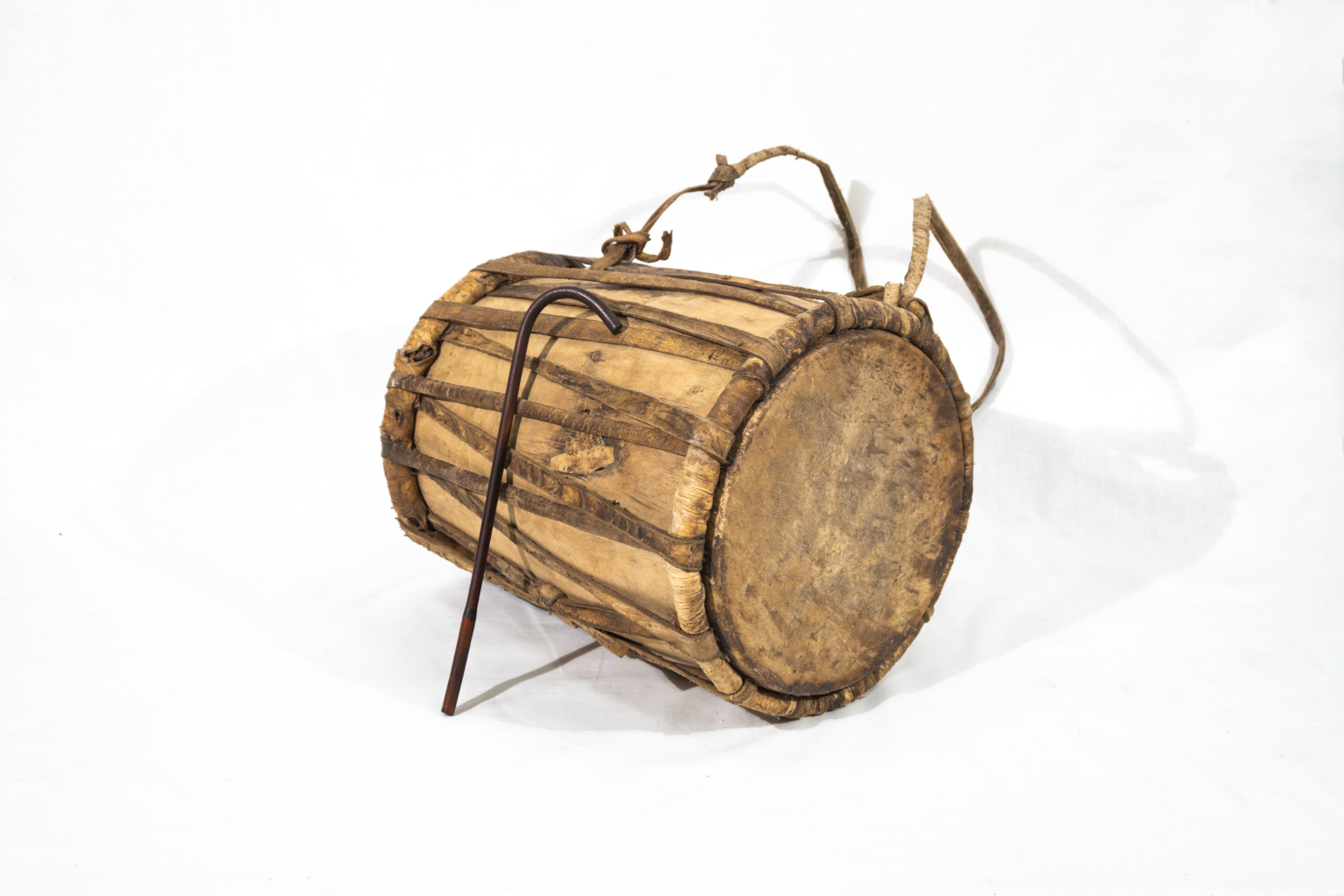
It is a double headed laced drum, made out of a hollow or hollowed out trunk of Phang (Gmelina arborea). The drum has a bigger head (amahang) and a smaller base (aling) with a slight bulge in the middle which gives the drum a somewhat conical profile. The amahang (bigger head) is struck with a cane stick with a curved end (Cheng be) and the aling (bottom head) is struck with the hand. (Descriptions at the Nothengpi museum)
It is said that the cheng, when played by the Duihidi, has powers to communicate with the souls of the dead. The beats of the cheng pi give souls direction/help the living communicate with the dead. A master drummer called the Duihidi enjoys an elated social and religious; he is a shaman because he alone is capable of communicating with and guiding the spirits of the dead in a funeral festival. (Dharamsing Teron in Modern Karbi Music, A Brief History) Chomangkan: Cheng Keparmang Procession In a procession of almost 11-14 chengs being played at the chomangkan, we saw the Duihidi leading the procession. All other players followed his directions. [Primary research] (Kengtirkekan, Rap a chenk, main role of a Duihidi) Ke Pa’er: Extremely obscene or erotic melodies called ke pa’er are performed by males during chomangkan, which are rare examples of group singing and are often sung to the rhythm of the chengpi. (Dharamsing Teron in Modern Karbi Music, A Brief History)
Cheng or Drum is indispensable to Karbi life. Cheng has played a key rhythmic factor in Karbi traditional life, giving people their artistic and spiritual expression. Karbis give great importance to both Cheng (Drum) and Duihidi (Drummer) who alone can guide the souls of the dead to their world of ancestors. Both Cheng and Duhuidi therefore have an important shamanistic role to play in the traditional funeral festival of the Karbis, the Chomangkan. Without Cheng, a Chomangkan is incomplete.
Cheng performs two different and opposite roles: a) Arong a’cheng, which is played without any reference to death and the other, b) Karhi a’cheng, which is performed exclusively for the dead at a Chomangkan. Both of the two types of rhythms are played at the funeral festival but the former can and are played at occasions such as welcoming dignitaries etc. but it is taboo to play Karhi a’cheng on occasions other than the funeral festival and it is performed only in the host village where such a festival is organized. Arong a’cheng performs a set of rhythms which are different from those performed for the dead. Ranges and depth in the funeral rhythms of Karhi a’cheng carry pathos and agony.
Chengpi: Cheng Kindar (stout bamboo stick, thicker at the head which slims toward the base, also bluntly pointed) and Cheng Baiko/Beko (wooden chisel with a broad head and a sharply tapered base) are used to tune the drum. A cane stick carved at one end called Chengbe is used to hit the face while the rear is stroked by left hand to produce at least 7 basic sounds: krong, klur, kret, krek (front) & chong, cherok and dip (rear). A master drummer called Duhuidi plays the Chengpi during funeral festivals. A rhythm called ‘kepalodok’ is played to the accopaniment of ‘nimso-kerung’ dance at the funeral festival. Nimso kerung kekan, literally dancing with the damsel, can be performed by unmarried youth of opposite sexes in alternate pairs. However, such a pair must belong to different clans. (Descriptions at the Nothengpi museum)